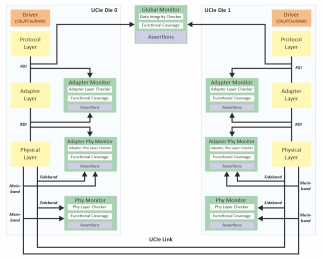Chiplet and D2D IP
Chiplet and D2D (Die-to-Die) IP cores enable the integration of multiple chips or dies into a single system for improved performance, scalability, and efficiency. These IP cores facilitate seamless communication between individual chips, optimizing interconnects and reducing latency. Bunch of Wires IP ensures high-bandwidth, reliable connections between chips, while UCIe IP (Universal Chiplet Interconnect Express) provides a standardized interface for connecting chiplets, enabling flexible and modular chip designs. Additionally, Ultralink IP offers high-speed, low-latency communication for die-to-die interfaces, ensuring efficient data transfer across multiple processing units.
All offers in
Chiplet and D2D IP
Filter
Compare
90
Chiplet and D2D IP
from
20
vendors
(1
-
10)
-
Intra-panel TX PHY IP
- The Intra-panel TX PHY IP is a low-power transmitter designed for COG (Chip-on-Glass) and COF (Chip-on-Film) display modules.
- It supports data rates up to 4.0Gbps, utilizing a DC-coupled differential pair and a push-pull current mode driver with 600mV swing and 6dB pre-emphasis, enabling high-speed and reliable panel-to-display communication.

-
UCIe PHY (Die-to-Die) IP
- Compliant with UCIe v2.0, supporting 4/8/12/16/24/32GT/s data rates
- for Standard Package up to 16 lanes / for Advanced Package up to 64 lanes
- Provides a 1024-bit data bus width with high-throughput die-to-die communication
- Includes automatic per-lane calibration and optional transmitter de-emphasis
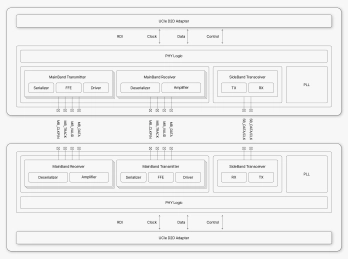
-
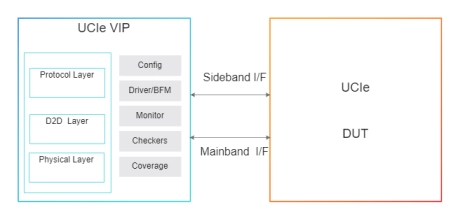
-
TSMC CLN5FF GUCIe LP Die-to-Die PHY
- IGAD2DY11A is an LP (Low Power) Die-to-Die (D2D) PHY for SoIC-X Face-to-Face advanced package.
- This GUCIe PHY not only supports UCIe specification rev 1.1 compliance physical layer and Raw D2D interface (RDI) but also optionally provides the
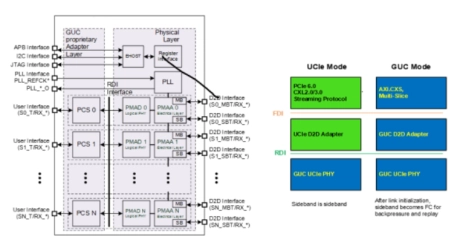
-
UCIe Controller baseline for Streaming Protocols for ASIL B Compliant, AEC-Q100 Grade 2
- UCIe Controller baseline for Streaming Protocols for ASIL B Compliant, AEC-Q100 Grade 2
- Low latency controller for UCIe-based multi-die designs
- Includes Die-to-Die Adapter layer and Protocol layer
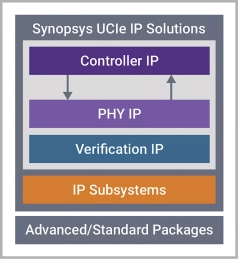
-
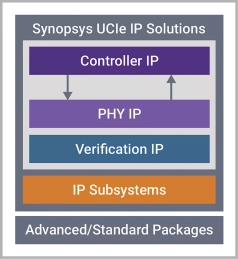
-
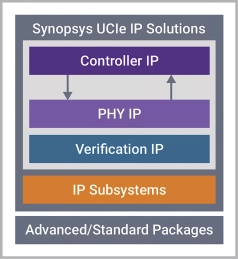
-
UCIe Controller baseline for Streaming Protocols
- Low latency controller for UCIe-based multi-die designs
- Includes Die-to-Die Adapter layer and Protocol layer
- Supports on-chip interconnect fabrics including AXI, CHI C2C, CXS, PCIe, CXL, and streaming
- Error detection and correction with optional CRC and retry functionality
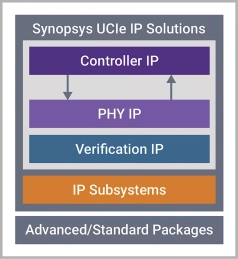
-
UCIe 2.0 Verification IP
- Available in native SystemVerilog (UVM/OVM /VMM) and Verilog.
- Unique development methodology to ensure highest levels of quality.
- Availability of various Regression Test Suites.
- 24X5 customer support.
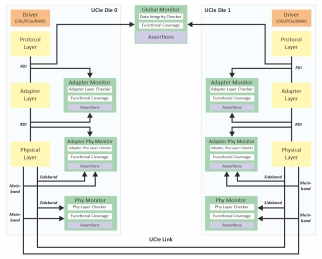
-
UCIe Verification IP
- Available in native SystemVerilog (UVM/OVM /VMM) and Verilog.
- Unique development methodology to ensure highest levels of quality.
- Availability of various Regression Test Suites.
- 24X5 customer support.
